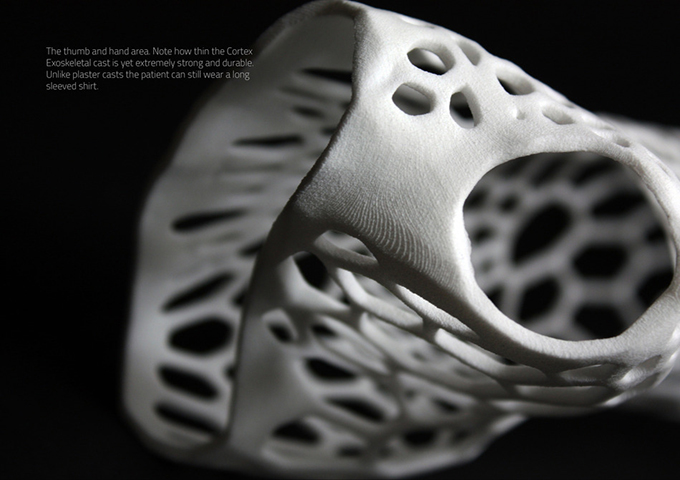Jake Evill, a recent graduate of the School of Design at Victoria University of Wellington in New Zealand, has created the ‘Cortex Cast’, a fully ventilated, super light, shower friendly, hygienic, recyclable and stylish exoskeleton and his design is absolutely beautiful. It's a breath of fresh air to a tired old medical device. Ville's take on casts can be compared to Bespoke Innovation's take on prosthetics where both designers consider aesthetics, comfort (including fit and breathability), and unique manufacturing techniques in their innovative new approaches. "Unlike the stinky plaster casts that we’ve begrudgingly become accustomed to, the cortex cast allows in plenty of airflow to prevent that itchy, uncomfortable feeling. The cast is also far less bulky, allowing the patient to still easily wear a long sleeve shirt.
The cortex cast utilizes the X-ray and 3D scan of the patient to generate a 3D model in relation to the point of fracture." Continue reading on enpundit.
Eville is looking for investors or partners for his Cortex cast. Go here for more info. Images from Jake ville's portfolio site.


